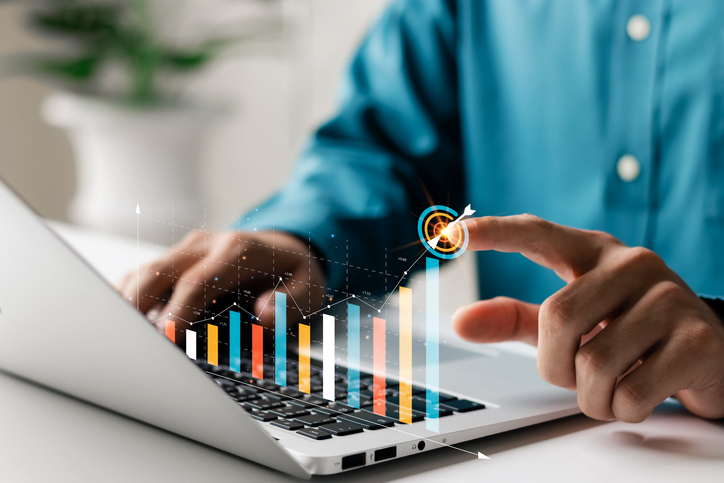The modern big data landscape is a complete mess at this point, as there are so many buzzwords and definitions floating around. So it’s pretty hard to choose the right approach to data-driven decision making, without fully understanding everything about analytics now.
This is a massive problem for decision-makers who don’t always have the time to study the ins and outs of various terms, products, and technologies. Sometimes, people responsible for keeping up aren’t incentivised to do it either, feeling threatened by all of the emerging technologies. A couple of years ago people were just talking about AI. Terms like ‘deep learning’ seemed fancy enough. Now they’re talking about automated machine learning, AIs that build other AIs, and many other things.
It’s evident that data analytics drives many business processes and improves discoverability of actionable insights. But what types of analytics can drive meaningful results for different businesses and industries? In this post, we’ll be taking a closer look at some of the current and emerging trends in data analytics and the essential analytical arsenal that should be explored.
Describe
It’s pretty straightforward: to draw business conclusions out of any information, you need to adequately describe the emerging data patterns that you’re dealing with. This information can be presented in retrospective, as a depiction of something that has already happened. Or it can describe something that’s going on right now. This overall process is called descriptive analytics.
Data mining and data aggregation are essential for this process, as they generate the actual insights that you will be working with. A simple example would be using your sales data to calculate the average order value or the average amount spent by your customers during their lifetime.
Descriptive analytics is used to create a generalised and aggregated view of what’s going on within your business. It serves as the foundation and the launching point for many marketing, sales, and product-centric activities.
Descriptive analytics relies heavily on data visualisation as the most straightforward way to get the information across any audience within the company. With the growth of big data, using descriptive analytics becomes harder and harder, as sometimes even numbers don’t carry any meaningful insights, being too overwhelming. Luckily, there are tons of data visualisation tools that can assist you with this task.
There are solutions available for any specific programming language if you have the resources for someone to create a custom data visualisation tool. But these are enterprise-grade data visualisation tools that can help you leverage the insights from your descriptive analytics:
- Tableau
- HighCharts
- Plotly
- DataWrapper
- Microsoft Power BI
There are many products in this space. But what’s important to look for in them is the enablement of other types of analytics. Once you realise that descriptive analytics is not enough to power your decision making, then you’ll want to try something else at a more advanced analytical level.
Diagnose
There are various takes on the structure of analytics. Many of them single out diagnostic analytics. Simply put, it uncovers the underlying reasons behind a specific event or operational change. So, if we’re taking the example of calculating customers’ LTV, diagnostic analytics can help you understand why a specific change in LTV has occurred over time.
Diagnostic analytics is a step further than just looking at data and making basic assumptions. It extensively utilises a company’s data warehouse infrastructure to drill down and find the cause behind any specific event. Some business intelligence professionals suggest that descriptive and diagnostic analytics are essentially the same. Or rather, they have to become parts of the same workflow, where you first take a look at data and then try to generate more profound insights. But that doesn’t always make sense, especially for smaller businesses that don’t even feel the need of going past descriptive analysis.
But what could be better than diagnosing the problem with your business? Predicting it.
Predict
Predictive analytics is enabled by the ever-growing availability of data, on-tap processing power, and evolution of machine learning, as a standalone software development niche. It’s the equivalent of the Magic 8-Ball that allows you to predict future events based on historical data. For example, while descriptive analytics only shows you when there was a spike in traffic, predictive analytics can actually ‘guess’ when that next peak is going to happen. This is one of the most invaluable business tools for the broadest variety of industries.
At this point, predictive analytics is used practically in any industry that’s digitised. It takes business decisions out of the realm of ‘what if’. But how does it work?
The high-level concept is pretty simple. You take data. A lot of it. As much as possible. And feed it into a machine learning algorithm. There are numerous algorithms and libraries, often built with one specific purpose, like image recognition or text interpretation.
Then you give the ‘machine’ a task – your goal for the prediction. The algorithm sifts through data and builds correlations that supersede the way humans are capable of processing information. For example, it’s pretty hard for us to visualise a trillion, as a number. Machines are built around processing numbers. As a result, you get a predictive model ‘trained’ on specific data that is able to predict certain events/conditions fairly accurately, within the scope of the same data or its future iterations.
On an elementary level, the model is like a ‘hunch’ that an experienced person gets. For example, an experienced batter may ‘guess’ the exact pitch that’s going to be thrown at him because of the weather, pitcher’s body type, and play style. We call it intuition. In the tech world, it’s called AI, and it has a far more solid foundation than our hunches. It’s built on data.
Predictive analytics is ‘all the rage’ right now. That’s why you hear so much about machine learning. Why wait until your production line breaks down when you can predict failure? Why lose money on patients who get readmitted into your hospital, when you can predict the risk of readmission and change the treatment accordingly? Why report a banking loss due to a string of improperly approved mortgages, when you can predict which mortgages are at a high risk of default?
Proactive decisions based on predictive analytics are the epitome of any highly competitive industry today. Being reactionary is only going to cost you money these days.
Prescribe
This is the final stage of the full theoretical cycle of analytics. Prescriptive analytics decides (prescribes) what should be done with all of the data gathered and analyzed through descriptive and predictive pipelines within a business.
It might seem like a no-brainer when you already have a prediction on your hands. But in reality, business processes are complex, and choosing the best course of action for the enterprise is not always easy.
Prescriptive analytics takes full advantage of all of the data and technologies available to make a business decision, being the final stage of the business analytics funnel.
Let’s take a very simple example of a complete predictive model analysis within a healthcare institution. For example, a hospital can predict an increase in the number of inpatients due to the expanding demographic profile of the nearby towns. We have the prediction on our hands. What should we do next?
This is where prescriptive analytics comes in. This type of business data analysis directly precedes a variety of impactful business decisions. So, for our hospital example, prescriptive analytics would identify the number of beds required to fill the need, as well as the number of people needed to cover for the increased workload for nurses, increased logistics requirements, etc.
Conclusion
The evolution of big data is probably the best thing that happened to business ever since the commercialisation of the Internet. The unprecedented speed of doing business is what got many companies on board with the Internet. Only then did it become a household commodity. Today’s big data ecosystem fuels the diverse palette of analytical solutions currently available for companies.
Just like with the adoption of the Internet, modern businesses can drive their decision making to a new velocity with the powers of the diverse analytics suite and a professional team of analysts and data scientists. In fact, data science, as a profession, only became possible because of big data and the inability of ordinary analysts and analytical tools to process it.
It’s been over four years since Harvard Business Review called data science the sexiest job of the 21st century. However, with the rise of AI in the analytics space, that’s no longer true.
Yet, for most businesses, these cutting-edge technologies are not yet available or affordable. That’s why relying on the standard set of analytics, which we described in this article, or a business intelligence consulting firm are excellent ways of enforcing data-driven decision making. That is until the time is ripe and each business can afford its own AI analyst that’s going to diagnose, predict and prescribe business solutions on the go.





